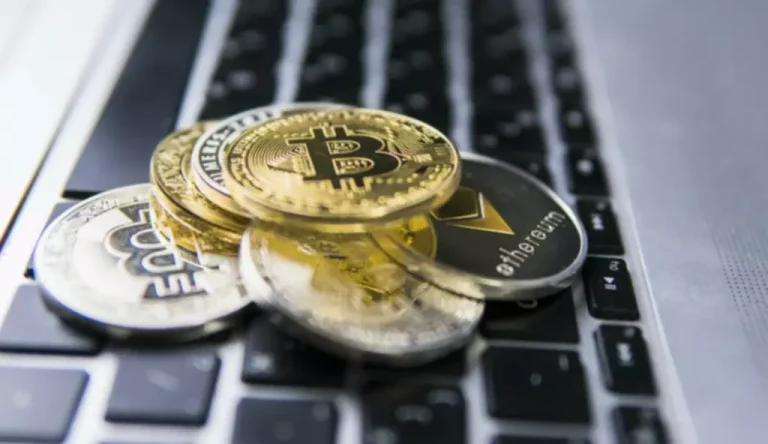What Are Liquidity Pools and How Do They Work?
As a decentralized platform, Uniswap does not have any account registration requirements. Users simply need to connect their crypto wallet to Uniswap and can begin trading right away. This means that you can buy and sell cryptocurrencies in complete privacy. Its decentralized exchange – which is called Best DEX, supports two blockchain networks – Ethereum and Binance Smart Chain. This means that you’ll have access to thousands of ERC20 and BSC tokens.

The initial circulating supply represents 21.71% of the total token supply, equal to around 217 million NTRN. The purpose of this website is solely to display information regarding the products and services available on the Crypto.com App. It is not intended to offer access to any of such products and services. You may obtain access to such products and services on the Crypto.com App. Liquity as a protocol is non-custodial, immutable and governance-free. Liquity is a decentralized borrowing protocol that allows you to draw 0% interest loans against Ether used as collateral.
Supported Crypto Markets
We mentioned that the top crypto exchanges without ID requirements are decentralized platforms. This in itself is a major benefit, especially when it comes to platform-related risks. The above example highlights that no KYC crypto exchanges offer a seamless and private trading experience. No accounts, no personal information, and no verification documents.
To maintain consistent liquidity in pools and therefore securing reliable trading, liquidity mining is facilitated. Liquidity mining includes the distribution of additional tokens or incentivizing liquidity providers through higher trading fees. Additional rewards serve as a compensation for the additional risk liquidity providers may have to deal with. Thanks to liquidity pools, there are no longer vendors asking for twice the market price or buyers willing to pay below-average discounts. Since the liquidity pool is a collection of assets secured by a smart contract, their values are constantly updated in accordance with exchange rates.
Risk of Temporary Loss
Those using Best Wallet will be the first to receive BEST tokens via a proposed airdrop. Other key liquidity pools such as BEL/USDT, FUN/USDT, GMT/BNB, GMT/ETH, HFT/USDT, IDEX/USDT, LEVER/USDT and MAGIC/BTC will also be removed. Binance announced it is getting rid of more than 10 liquidity pools as well as introducing Neutron NTRN/USD staking.
You should not construe any such information or other material as legal, tax, investment, financial, cybersecurity, or other advice. Returns on the buying and selling of crypto assets may be subject to tax, including capital gains tax, in your jurisdiction. Any descriptions of Crypto.com products or features are merely for illustrative purposes and do not constitute an endorsement, invitation, or solicitation.
Pros of Liquidity Pool
Initially, the value of both of the paired assets is equal, and they contribute an equal value to each. However, over time, the new altcoin experiences a surge in demand, and its price increases compared to ETH. As a result, the proportion of the trader’s assets in the pool shifts, and they end up with more of the altcoin and less of ETH. The loss is labeled impermanent since, over time, two strong assets should have different phases of popularity relative to one another. $ETH goes up relative to $USDC as it goes down, so the proportion of those two tokens evens out, but there is no guarantee this will happen.

Some of them are user-friendly and interactive to make the experience as simple as possible, whereas others are more sophisticated and require additional knowledge. When you deliver an AMM liquidity, there is a potential that you could experience a quick loss. Compared to “hodling,” this kind of loss results in a monetary loss.
DeFi Yield Protocol
A liquidity pool is basically funds thrown together in a big digital pile. But what can you do with this pile in a permissionless environment, where anyone can add liquidity to it? Let’s explore how DeFi has iterated on the idea of liquidity pools.
- It’s the only inter-exchange platform that allows trading across different exchanges and blockchains.
- Kyber Network is a decentralized platform that provides liquidity for many different Dapps.
- Obviously, this situation would lead to slower orders and inefficient work, which eventually leads to client dissatisfaction.
- Aave is primarily an open-source, decentralized lending protocol with a huge liquidity pool.
- Suppose a buyer wants to buy 100 TK (tokens) from the liquidity pool so he needs to make a payment of 100 ETH in order to get the 100 TK.
- While most traders don’t mind providing this information to crypto exchanges, some do.
- To better comprehend the technology and its advantages, you can begin learning DeFi.
First of all, cryptocurrency and financial markets both depend on liquidity. It takes substantial time to convert an asset into cash if there is not enough liquidity on the market. High liquidity means that the process of turning assets into cash while preventing sudden price changes is quick and effective. Liquidity is an important aspect of not only traditional markets, but also the crypto market due to the highly volatile nature of cryptocurrencies.
Yield Farming and Crypto Liquidity Pools
Raydium is one of the best no KYC crypto exchanges for trading SOL-based tokens. Built on the Solana blockchain, Raydium offers competitive trading fees and lightning-fast transaction speeds. 0.22% goes back to the respective liquidity pool while the balance is used to repurchase Raydium’s native token, RAY. While IL presents a risk, it is important to note there are also potential rewards to liquidity provision. In fact, IL may be a trade-off for the potential rewards that liquidity provision offers.
Liquidity pools serve the appetite for high rewards for taking a high risk. The rise of crypto liquidity pools offers promising prospects for https://www.xcritical.com/ the broad expansion of crypto and DeFi. In cryptocurrency transactions, liquidity pools eliminate the need to wait for marching orders.
Most popular liquidity pools
This guide has ranked the best no KYC crypto exchanges for safety, supported markets, fees, and other key metrics. Our methodology also examined whether passive income tools were offered by each no KYC exchange. This ensures that you can generate income on your idle crypto tokens. For instance, while you can easily swap tokens, you might not have access to analytics. This means that you’ll need to perform research and analysis on another platform, which isn’t convenient. Another benefit of no KYC crypto exchanges is that you don’t need to risk data privacy leaks.
Find all important crypto projects & networks in seconds.
Once this trading volume was reached, the user would need to provide personal information and KYC documents. You’ll also need to assess what crypto markets are supported when choosing an exchange. From our research, the best no KYC exchanges are decentralized – meaning that they typically support thousands Liquidity Pools in Crypto of tokens. However, the specific tokens supported will depend on which networks the exchange is compatible with. For example, Best Wallet, UniSwap, SushiSwap, and many other no KYC exchanges are decentralized. By using a no KYC crypto exchange that has a decentralized framework, you can avoid these risks.
Why Liquidity Pools are Important?
Liquidity pools are the gateway to offering on-chain trading services and thus highly important when it comes to future DeFi developments. Impermanent losses only become permanent when liquidity is claimed and taken out of the pool before the price ratio reverts. If liquidity providers continue to lock their assets in the pool, the price ratio may revert and the initial book loss is balanced out.
